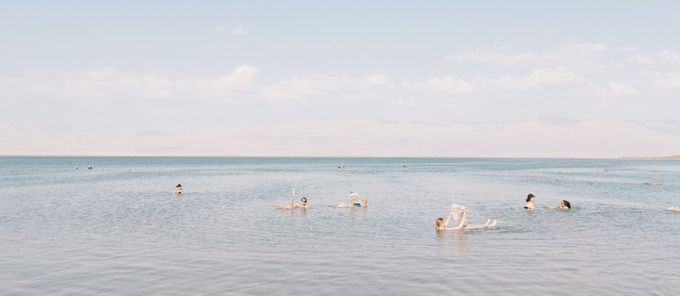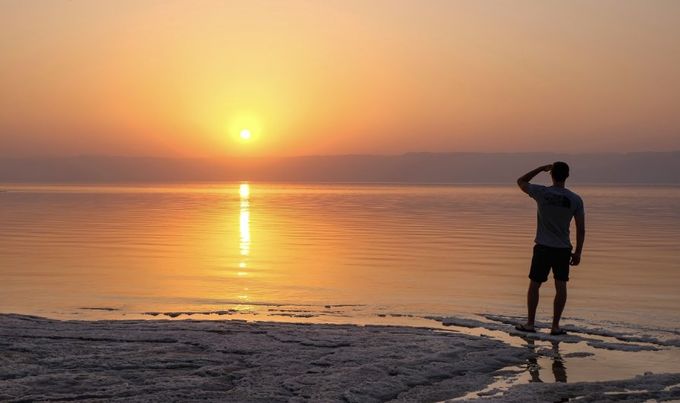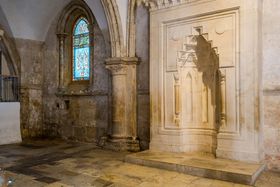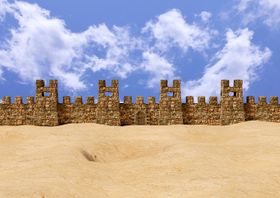Bringing The Dead Sea to life through the Artza Holy Land blog
Explore the Holy Land through the Artza Holy Land blog. A pilgrimage through the country and discover the beauty and culture of the birthplace of Christianity.
Published April 28, 2025
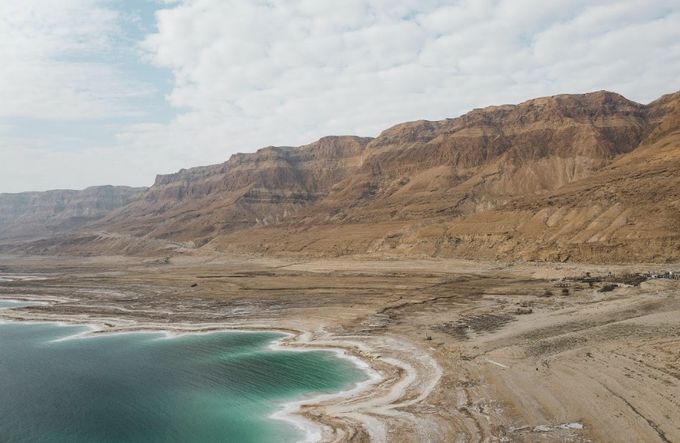
Embark on a journey and travel to the Holy Land through the lens of the 'Holy Land Artza Blog' series.
Discover the Holy Land's Rich Culture & History in The Dead Sea, Israel.
In this series, you will be taken on an immersive journey through the Holy Land. Exploring ancient, biblical, and modern stories, magnificent scenery, flavors, traditions, sites, and most importantly of all - we will introduce you to the people that call this place home.
Along the journey, you will meet all of the Israeli artisans and charities that we help support and explore the rich culture, history, and beauty of Israel. And for those of you who want a fully immersive experience of the land where Jesus walked, our Artza subscription box is designed to do just that.
Delivered quarterly, each locally sourced Artza box is packed with gorgeous, handcrafted gifts, foods, local spices, content, stories, scripture, and so much more! Delivered from the Holy Land directly to your home.
Location: Dead Sea
Our journey continues at the Dead Sea. The Dead Sea lies within the long trough of the Jordan Valley, also known as the Rift Valley. This trough forms part of the longest and deepest crack in the earth’s crust, at approximately 1,300 feet (430 meters) below sea level, making it the lowest place in the world.
How Did the Dead Sea Get Its Name?
The Dead Sea received its name because of the high salt concentration that makes it uninhabitable for any plants or animals.
Why is The Dead Sea called The Dead Sea?
The Dead Sea is not actually a sea, but a hypersaline lake. However, due to the extreme salinity of its water, the Dead Sea is a harsh environment in which plants and animals cannot flourish.
Top things to do near & at the Dead Sea, Israel.
1. Qumran Caves: Visit the Qumran Caves, where the Dead Sea Scrolls were discovered. The Qumran Caves are a series of caves, both natural and artificial, found around the archaeological site of Qumran in the Judean Desert. It is in these caves that the Dead Sea Scrolls were discovered.
What are the Dead Sea Scrolls?
The Dead Sea Scrolls are a collection of Jewish texts that were discovered in the 1940s in the vicinity of the Dead Sea. These texts, written in Hebrew, Aramaic, and Greek, include fragments from every book of the Old Testament as well as many other Jewish writings from the Second Temple period. The scrolls are of high historical and religious significance because they provide a glimpse into Jewish life and thought in the centuries before and during the time of Jesus. They are also of significant linguistic and textual importance because they include some of the oldest surviving copies of the Hebrew Bible.
When were the Dead Sea Scrolls found?
In 1947, the Dead Sea Scrolls were found in 11 caves near the ruins of Qumran on its northwestern shore. The manuscripts date from around 250 BC to 68 AD. They contain Biblical prayers and texts that have been key to our understanding of the beginnings of Christianity.
2. Float in the Dead Sea: The Dead Sea is not only the lowest point on earth, but it is also one of the saltiest and most mineral-rich bodies of water in the world. The Dead Sea is renowned as a source of healing and a popular destination for health and wellness treatments.
3. Ein Gedi Reserve: Ein Gedi is located on the western shore of the Dead Sea, near the ancient city of Qumran, where the Dead Sea Scrolls were discovered. Christian tradition says the area around the Dead Sea, including Ein Gedi, was part of the wilderness where Jesus stayed when he fasted and prayed before the start of his public ministry.
The desert of Ein Gedi is one of the locations that have been proposed as the possible place where Christ spent his time in the wilderness.
4. The monastery of St. George: The monastery of St. George is located near the Ein Gedi Nature Reserve on the western shore of the Dead Sea, situated in a Byzantine monastery from the 6th century. It is believed that it was built on the site of a cave where St. George, a Christian martyr, sought refuge.
5. Masada: Located on an isolated clifftop in the heart of the desert, a lofty plateau overlooking the Dead Sea and the untamed landscape of the Judean Desert, there once stood a magnificent palace.
The events that took place at Masada occurred within the broader historical context of the Roman Empire, which was an important cultural, political, and religious force in the early centuries of Christianity.
Rich history: The Dead Sea is an extremely significant place in the history and religious tradition of the Israelites, it is considered a boundary of the promised land, a place of camping during the journey, a place of healing and restoration, and also a place where it is claimed Jesus chose to fast and pray before starting his ministry.
Distance from Jerusalem: The Dead Sea to Jerusalem is approximately 34 kilometers (21 miles).
As we come to the close of our fifth Holy Land Artza Blog which takes you on a journey through Israel with us, we want to express our deepest gratitude for your participation. It has been a privilege to share with you the beauty, culture and traditions of this land that holds such a special place in our hearts thus far, and we are so excited for what is to come!
For those who seek a deeper connection to the Holy Land, our Artza subscription boxes are the next best thing to actually travelling to Israel, it is the best way to bring the Holy Land to your doorstep. Each Artza box is sent to you from a different region in Israel, and it is packed with up to eight stunning hand-crafted gifts, local foods, spices, art, scripture, ceramics and so much more - each carefully chosen from the local artisans and charities of that specific region - with the aim of bringing the Holy Land to life in the most meaningful and immersive way possible. This is your chance to experience the Beauty of the Holy Land and to support the people of Israel.
We look forward to welcoming you back soon and providing you with the next Holy Land Artza Blog, and of course, welcome to ISRAEL!



